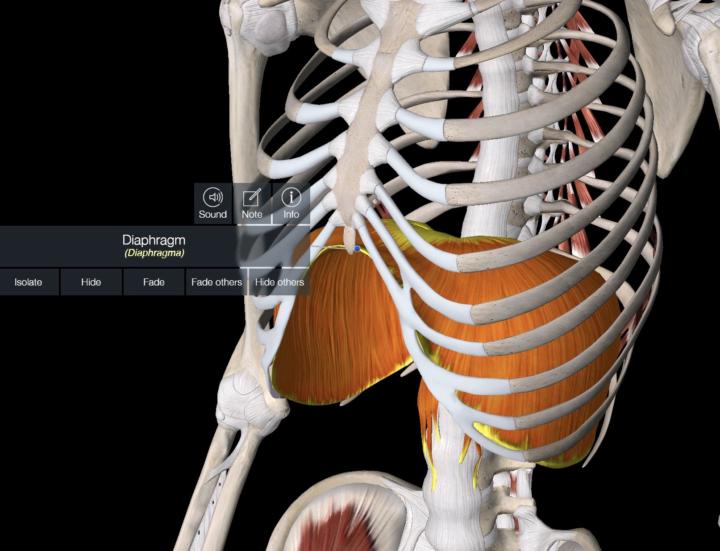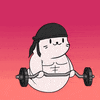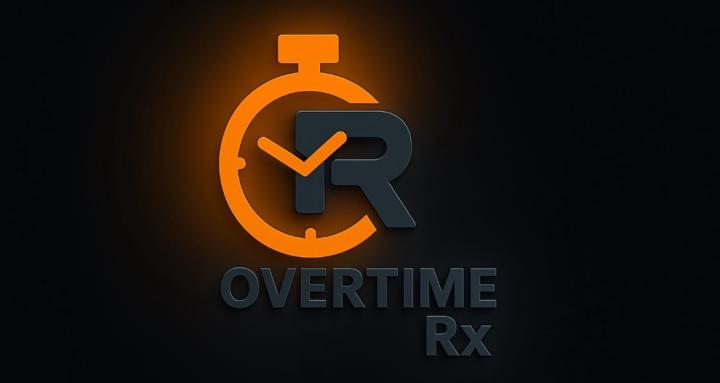
Write something
How your breathing could be secret to pain and performance
Back pain. Shoulder pain. Neck pain. Rib pain. What do all of these have in common from a rehab standpoint? They almost always start with the same exercise: diaphragmatic breathing (belly breathing). At first glance that sounds odd. Why would we focus on breathing when the pain is so far away from the lungs? Because your breathing pattern alters everything you do. Whether you’re a college athlete or someone who sits at a desk all day, you breathe thousands of times per day. If that breathing pattern is dysfunctional, then every other movement you make is built on compensation. What is the diaphragm, really? The diaphragm is a dome-shaped muscle that sits underneath the lungs. It separates the chest cavity (heart and lungs) from the abdominal cavity (digestive organs and more). It’s unique because it has two critical roles. First, respiration. When the diaphragm contracts, it descends and flattens, expanding the lungs and drawing air in. Second, core stability. The diaphragm forms the top of what we call the core cylinder: - Diaphragm on top - Pelvic floor on the bottom - Core musculature (obliques, rectus abdominis, multifidus) wrapping around As the diaphragm descends, it pushes abdominal contents downward. The pelvic floor resists that pressure (a topic that deserves its own post). This interaction creates intra-abdominal pressure (IAP). IAP acts like an internal weightlifting belt, stiffening and stabilizing the spine against shear and bending forces. This is the foundation of proper core engagement. So, what happens when we don’t use it properly? When the diaphragm doesn’t do its job, people become chest-dominant breathers. Instead of expanding through the abdomen and ribs, the body recruits muscles around the neck and shoulders to pull air in from above. These muscles were never designed to be primary breathing muscles. Over time they fatigue, posture deteriorates, the head drifts forward, the shoulders round, and those same muscles can no longer properly support the neck and shoulders.
1
0

Build an Audience or Build Systems? The Choice Every Coach Faces
I’ve noticed that a lot of fitness coaches and trainers put in countless hours trying to grow their brand, post on social media, and run back-to-back sessions with clients — but at the end of the day, they still feel stuck when it comes to creating consistent income or reaching a wider audience. The truth is, there’s only so much time in a day, and if everything depends on you being present 24/7, burnout eventually kicks in. What’s interesting is that some coaches have started looking at things differently. Instead of only chasing likes and followers, they’ve begun building assets that actually work for them in the background. For example, a channel that keeps attracting people to their content every single day, or a system that allows clients to purchase programs or products without needing the coach to be online. It’s a completely different way of thinking — one that focuses on growth that scales beyond your personal time and energy. It made me curious to hear from others in this community: if you had to choose only one, would you rather spend your energy on building a bigger online audience (through platforms like YouTube, Instagram, or TikTok) or setting up systems that can sell your programs and products automatically (like online shops or funnels)? And why?
Stop Thinking “Core” = Crunches 💥
Most people train their core like it’s only about moving the spine — endless crunches, sit-ups, or twists. But for athletes (and anyone who wants to move pain-free), the core’s real job is stability — controlling the spine and pelvis under load so your arms and legs can do their job. An example of core straining that is looking at resisting movement from all different directions would look like this: 1️⃣ Anti-extension → McGill Curl-Up → Plank → Ab Wheel 2️⃣ Anti-lateral flexion → Side Plank → Copenhagen Plank → Unilateral Farmer Carry 3️⃣ Anti-rotation → Bird Dog → Bear Crawl → Single-Leg RDL This way, you train your core to handle forces in all directions — exactly what happens in sport and life. Now why is training you core important? The core isn’t just your abs—it’s the entire system of muscles that stabilize your spine, pelvis, and rib cage. Its primary job is to transfer force efficiently between the upper and lower body while protecting the spine from excessive movement or load. Research shows that better core stability is linked to: - Reduced injury risk — particularly low back pain and lower extremity injuries in athletes (Huxel Bliven & Anderson, Sports Health, 2013). - Improved performance — enhancing sprinting, jumping, and change-of-direction ability by creating a more stable base for limb movement (Reed et al., Sports Medicine, 2012). - Efficient force transfer — allowing you to generate more power in lifts, throws, and hits without “leaking” energy through poor trunk control (Behm et al., Sports Biomechanics, 2010). In short, a strong, stable core means you can move more powerfully, with less wasted motion, and with a lower chance of breakdown over time. What do you do for core training? And if you have no clue where do start, go to the movement prescription in the classroom section and get started.
Poll
3 members have voted

Steal These Pro Training & Recovery Hacks
I went down a bit of a rabbit hole this week watching training content. First was the Arizona Wildcats football team doing their in-season workouts—lots of stability drills, balance work, and injury-prevention stuff you don’t always see in regular gym programs. Then I watched Marquese Brownlee break down the tech he uses for training and recovery—some of it’s pretty simple, but super useful even if you’re just a weekend warrior.If you’re into sports, staying healthy, or just finding ways to recover faster, these kinds of videos are gold. You see what the pros are doing and start realizing, “Hey… I could actually do some of this too.” Biggest thing with these videos is that there are a lot of techniques that they are using for their athletes that cost a person nothing but have a large impact as opposed to to the expensive tech which people tend to gravitate toward. Check them out this weekend! Do you use any recovery tools like these?
💬 What’s one old injury you’ve just “learned to live with”?
Whether it’s a sore knee from your playing days or a shoulder that’s never been the same — drop it below. Let’s talk about what actually helps.
1-21 of 21
powered by

skool.com/the-movement-prescription-1200
Train smart. Prevent injuries. Overtime Rx helps athletes stay in the game with rehab-informed strength and real sports insight.
Suggested communities
Powered by

